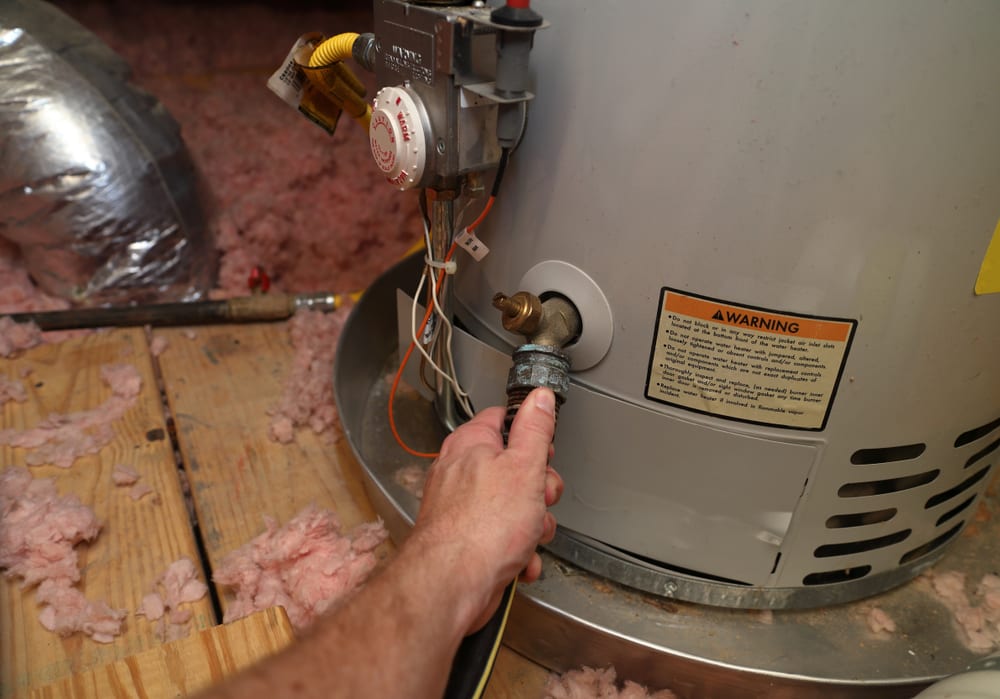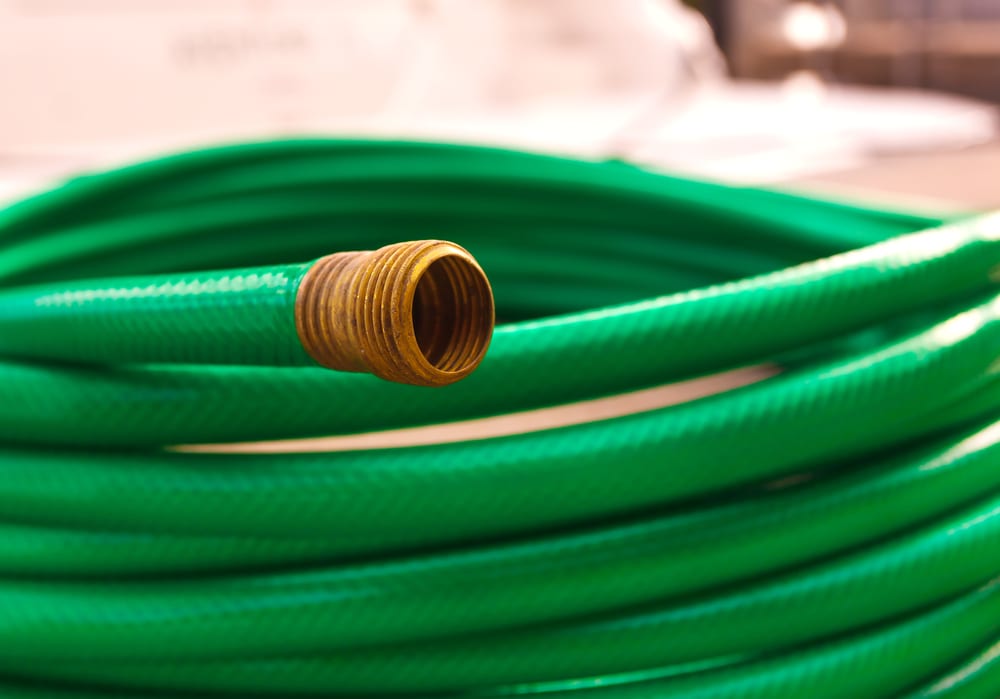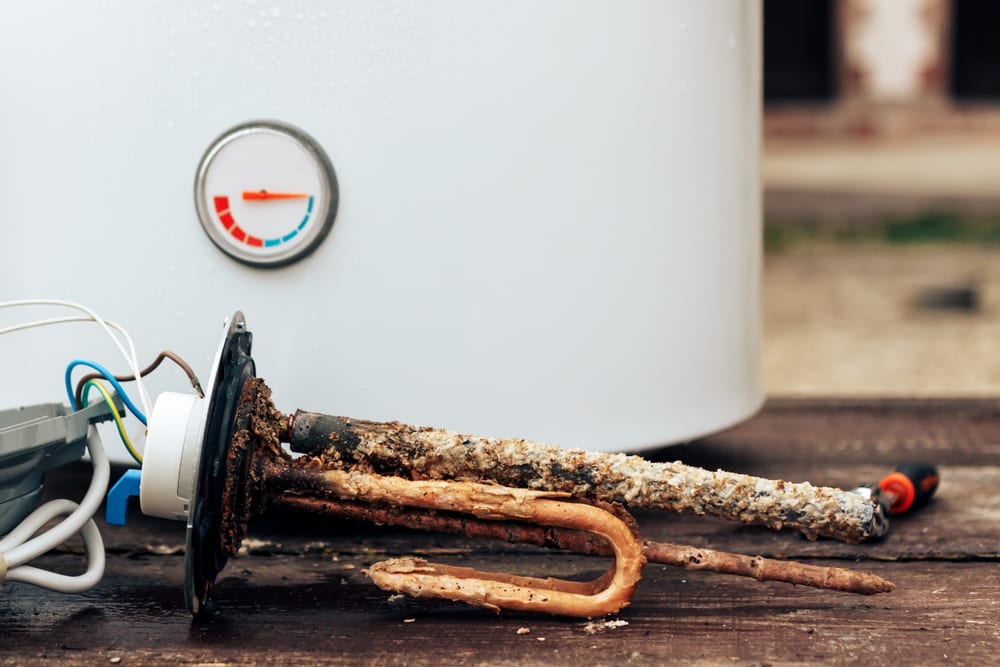
Some types of water heaters feature a large holding tank to ensure your family has a decent amount of hot water. However, the efficiency and capacity of this tank are negatively affected whenever the base of the tank begins to fill with naturally-occurring minerals, sand, and other small debris that get carried in from your municipal water supply.
To increase the life cycle of your water heater, you will need to drain it once or twice a year to flush excess minerals from the water tank. Fortunately, the process of draining a water heater is simple and does not require assistance from a licensed technician. You can do it yourself with the basic tools around your house.
Proper Steps to Drain a Hot Water Heater
Step 1: Deactivate the Water Supply
Use the valve located at the top of the water heater to deactivate the water supply.
Step 2: Deactivate the Water Heater
Adjust the settings on your thermostat to “pilot” or shut off its power through your electric circuit breaker panel in your utility room. If you have an electric water heater, it’s important to confirm it’s deactivated prior to flushing the heater to prevent damage to the heating elements. Once the water heater is turned off, wait a couple of hours for the hot water to cool down to prevent injury.
 Step 3: Connect a Water Hose to the Drain Valve
Step 3: Connect a Water Hose to the Drain Valve
Find the drainage valve at the bottom of the water tank and attach any standard hose to it while placing the other end in a floor drain or outside where it can drain safely. Avoid being burned by the hot water as you are working.
Related Article: How to Fix a Water Heater Leak
Step 4: Open Hot Water Taps
Open a nearby hot water tap (on the floor above if possible) to alleviate systemic pressure.
Step 5: Open the Drainage Valves
Cautiously open the drain valve to avoid the hot water. Once the water heater is drained, turn on the cold water supply to loosen remaining minerals from the water tank. Drain the water and repeat the process until all the sediment is removed. If the drain valve is completely blocked by sediment, you will need to contact a licensed plumber.
Step 6: Close Drainage Valve & Activate Water Heater
The last step of draining a water heater is to close the drain valve and detach the hose. Next, activate the cold water supply. It will take a couple of minutes for the tank to fill with water. Next, you will need to shut off the warm water tap you activated earlier once water begins to flow from the sink. If you have a gas water heater, open the gas valve to begin heating the water in the tank. Do not forget to activate the electricity to the water heater at your circuit panel. Congratulations, you have successfully flushed your water heater!
Benefits of Flushing a Water Heater Each Year
You can prevent unnecessary damage to your water heater by flushing the tank once a year. To help you enhance the life cycle of your heater, we have compiled a list of the benefits of draining a water heater.
 1. Eliminates Sediment & Minerals
1. Eliminates Sediment & Minerals
The biggest cause of water heater failure is sentiment build-up, which can even form on the electrodes of your electric water heater. This makes it difficult for the system to run efficiently. Regularly draining your heater should be enough of a preventive measure to avoid the issue.
Related Article: How to Use a Limit Switch on a Furnace
2. Enhances The Speed of Heating
Your water heater works slower when it is experiencing issues. A build-up of debris in the water tank will make it harder for your water heater to warm the water sufficiently or quickly. Flushing out the debris is the easiest way to improve the speed of the heating process.
3. Decreases Energy & Utility Bills
Once a collection of calcium and magnesium forms at the bottom of the water tank, the total amount of time it takes to heat the water will increase. Since the water heater is required to operate for a longer period of time, the cost of your utility bills will rise. Rather than paying more for the same amount of water, drain your water heater to keep your bill low.
4. Eliminates Water Heater Noises
Tired of your water heater waking you up in the middle of the night? Not only is this sound distracting to your sleep, but it also is a signal that your water heater is not working properly. The noise elevation is indicative of scale buildup that may or may not go away on its own. Once the minerals solidify, the circulation of warm water will be negatively impacted. Flushing the tank will promote good heat circulation and will stop the noise sooner rather than later.
 5. Removes Odors From Water
5. Removes Odors From Water
Without proper circulation, the idle water will take on an unpleasant smell. Properly draining your water can only benefit you, so get it done as often as necessary so you don’t have to deal with strange odors permeating into your home.
Related Article: Noticeable Signs & Symptoms of a Gas Leak
Water Heater Repair & Install Services
Avoid the hassle of a cold shower by contacting a licensed plumber on our team by phone at (484) 206-8594. We offer water heater repair and installation services for gas and electric water heaters. We recognize your water heater is only as good as the maintenance it receives, so trust the experts on our highly-skilled technical team to transparently assess and properly care for your water heater. Our team of certified plumbers offer other types of plumbing services for clogged drains, broken water lines, gas leaks, inefficient sump pumps. Our team of licensed technicians has the tools and equipment required to resolve problems with your water heater.

